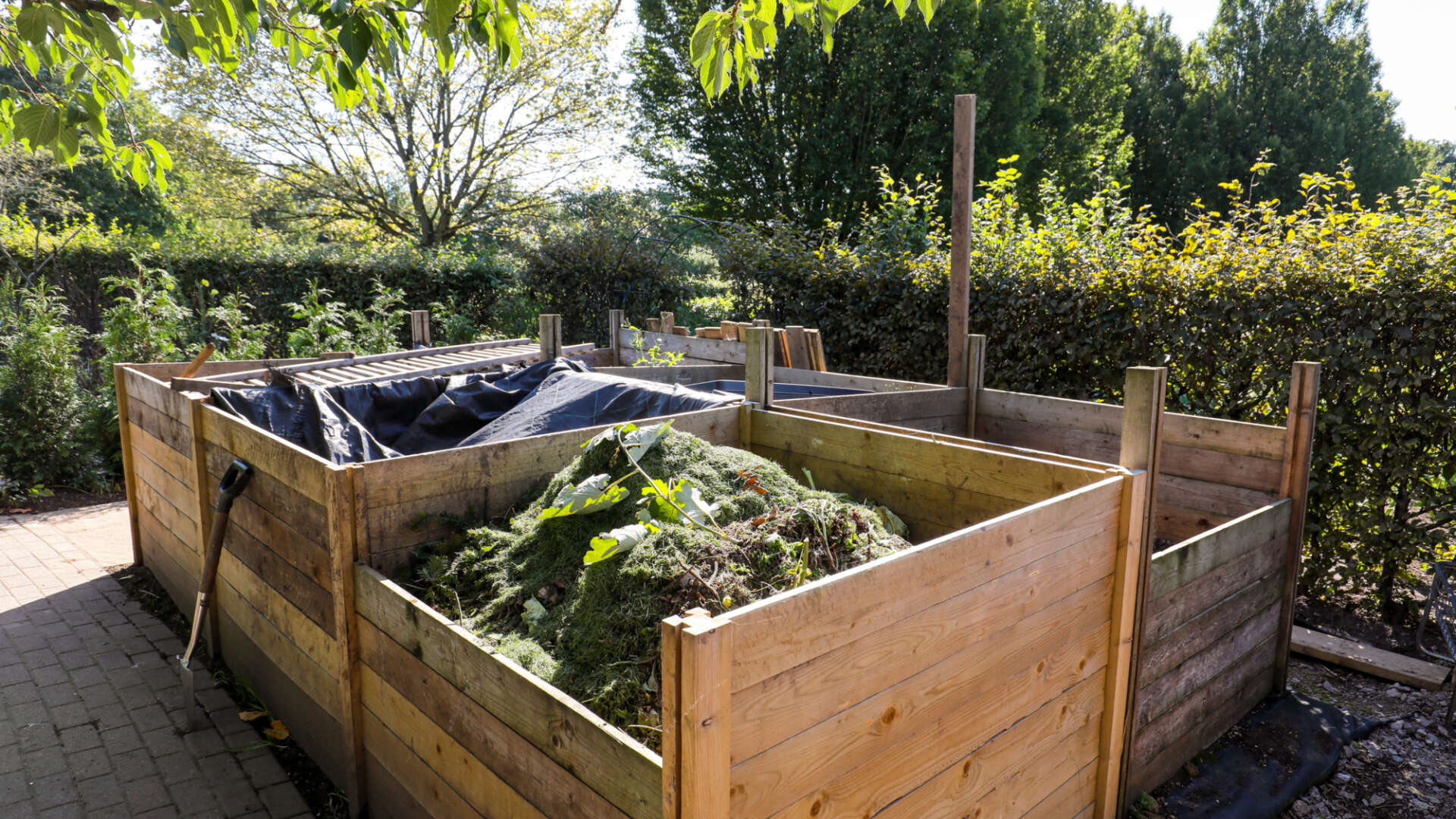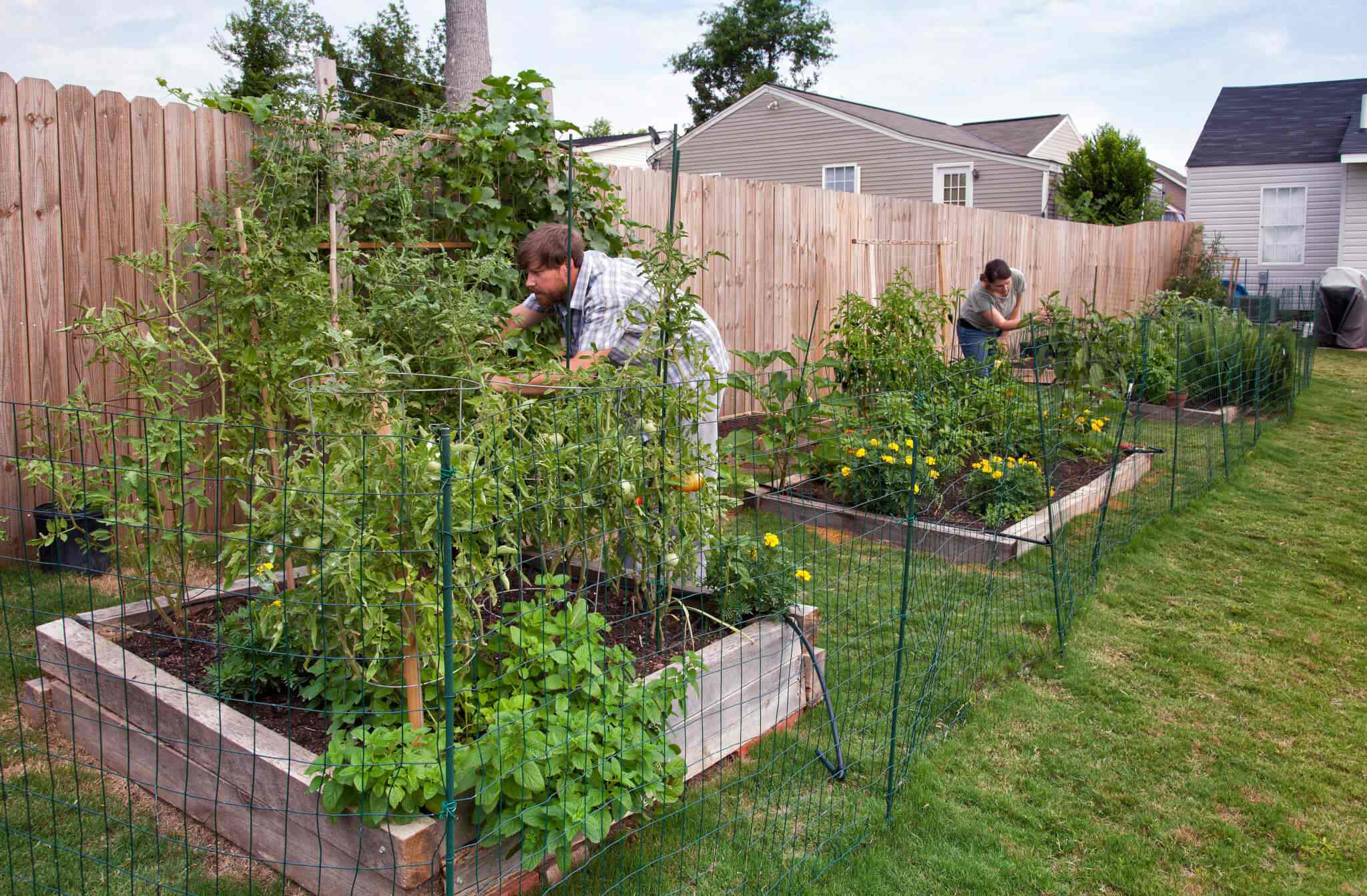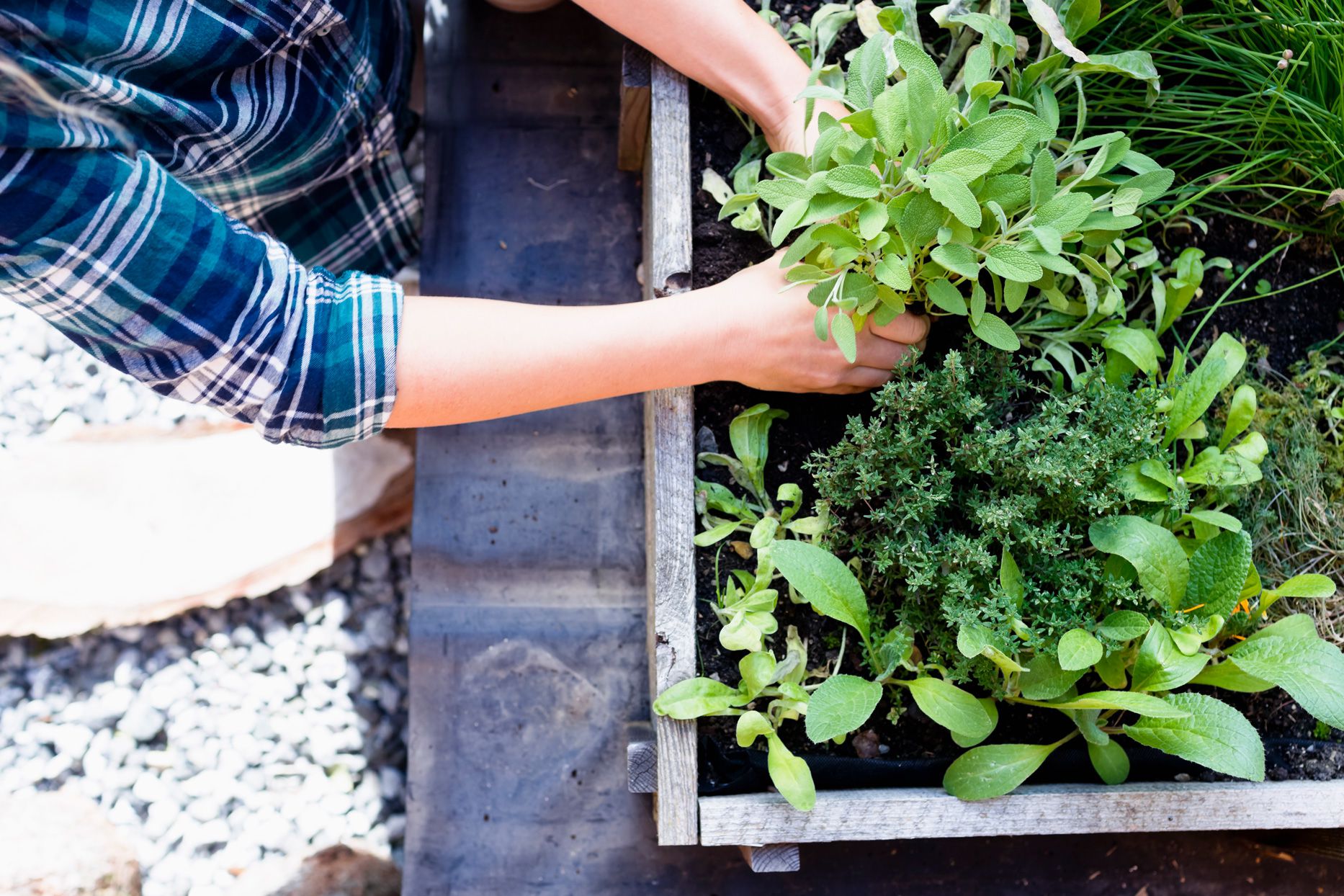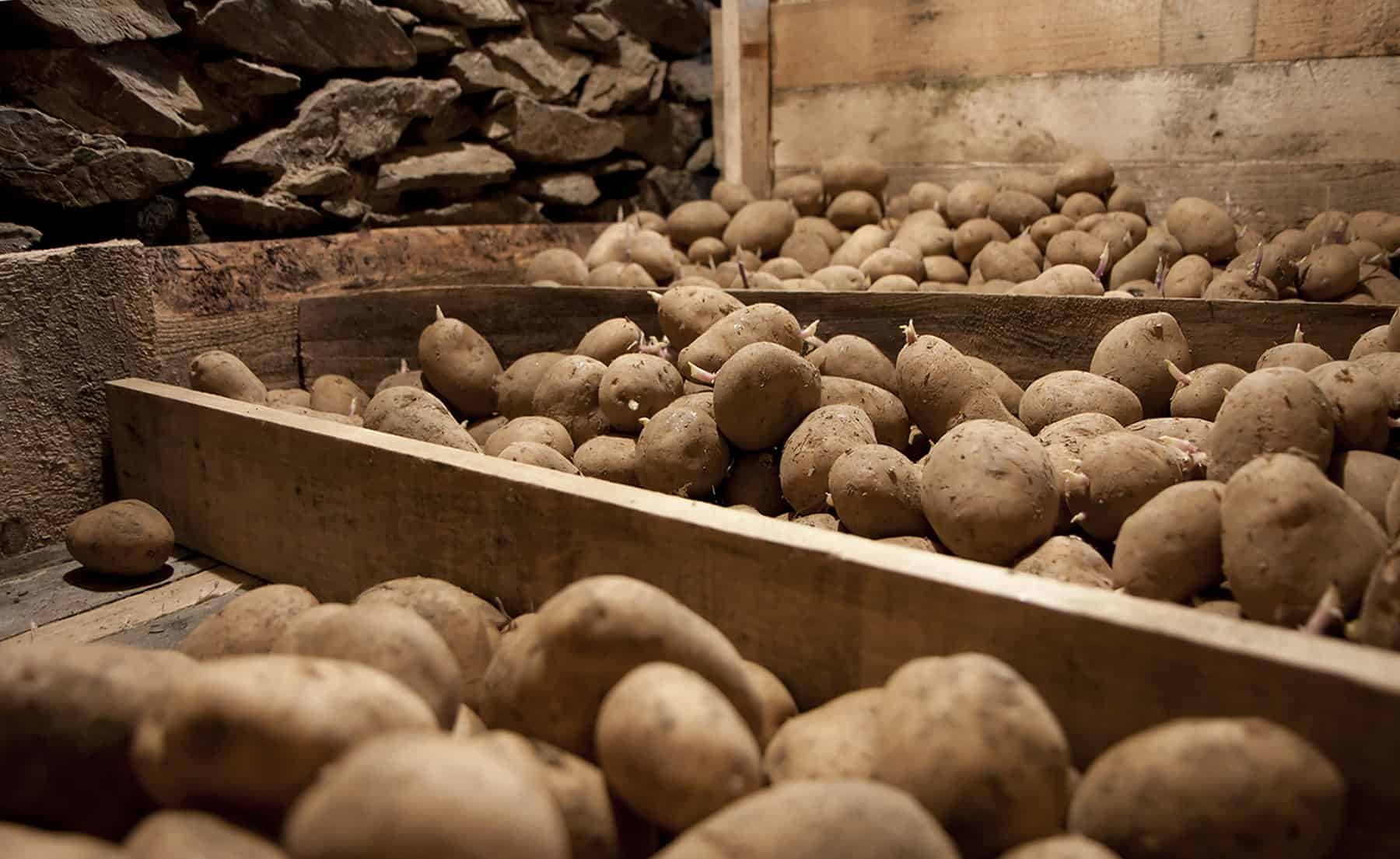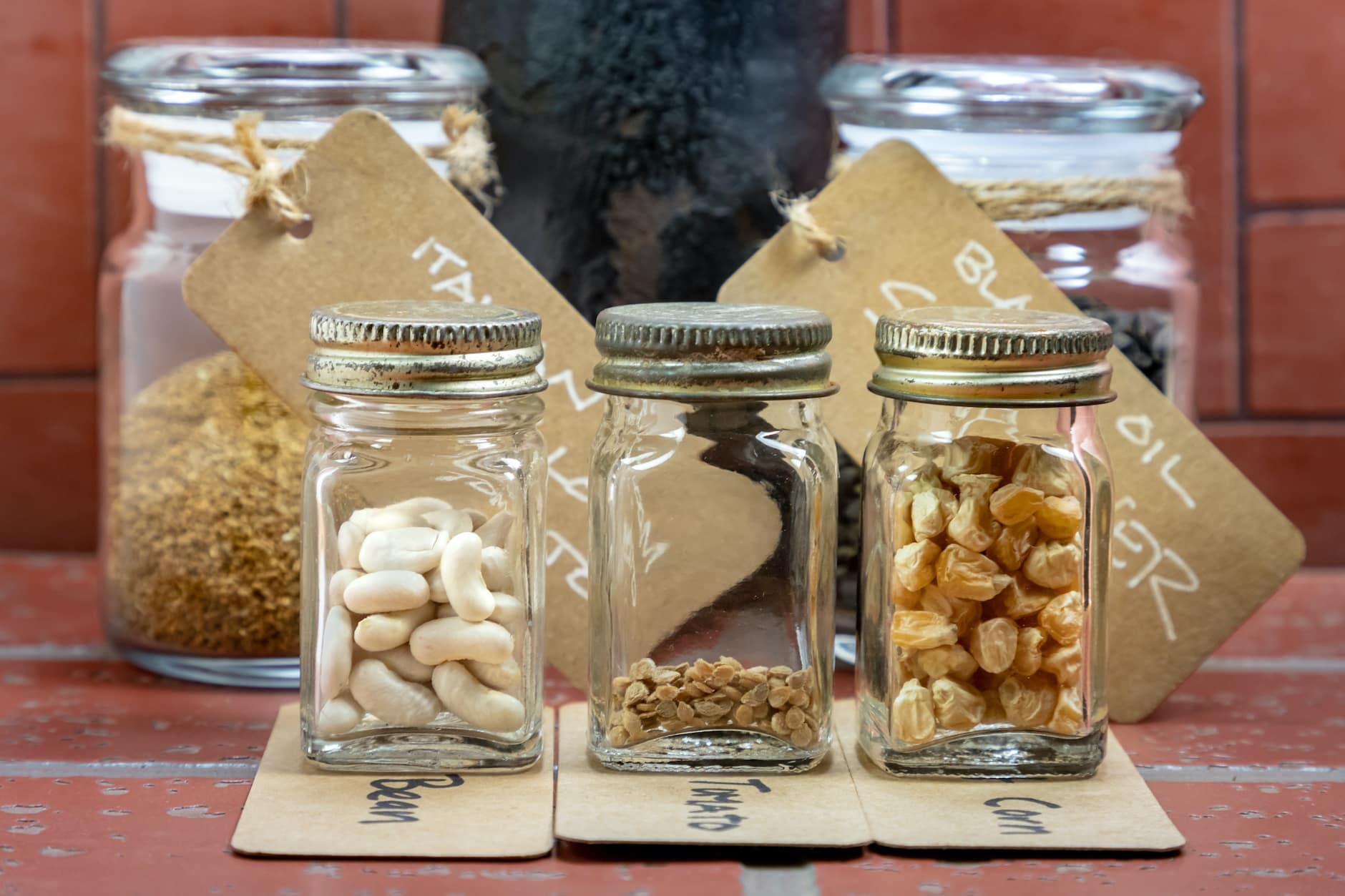Home>Gardening Basics>Understanding Soil>How To Rejuvenate Garden Soil


Understanding Soil
How To Rejuvenate Garden Soil
Modified: February 9, 2024
Learn the secrets to rejuvenate your garden soil and improve plant health. Gain a deeper understanding of soil composition and its impact on your garden's success.
(Many of the links in this article redirect to a specific reviewed product. Your purchase of these products through affiliate links helps to generate commission for Chicagolandgardening.com, at no extra cost. Learn more)
Table of Contents
- Introduction
- Understanding Soil Depletion
- Assessing the Condition of Your Soil
- Choosing the Right Amendments
- Using Organic Matter to Restore Soil Health
- Composting Techniques for Improving Garden Soil
- Incorporating Cover Crops
- Avoiding Chemical Fertilizers and Pesticides
- Proper Mulching Practices for Soil Rejuvenation
- Crop Rotation and Succession Planting Strategies
- Conclusion
Introduction
Welcome to the world of gardening! Whether you are a seasoned gardener or just starting out, understanding the importance of soil health is crucial for the success of your garden. Soil is not a mere mixture of dirt and rocks, but a complex ecosystem that supports the growth and nourishment of plants. Over time, repeated cultivation, nutrient depletion, and exposure to harsh weather conditions can lead to soil degradation.
Soil depletion is a common problem faced by many gardeners. It is characterized by a reduced capacity to retain moisture, nutrients, and beneficial microorganisms, resulting in poor plant growth and yield. However, the good news is that with the right knowledge and techniques, you can rejuvenate your garden soil and create an environment that fosters healthy plant growth.
In this article, we will explore various strategies for rejuvenating garden soil and restoring its vitality. We will delve into the importance of organic matter, the role of composting and cover crops, the avoidance of chemical fertilizers and pesticides, proper mulching practices, and the benefits of crop rotation and succession planting.
By implementing these techniques, you can transform your depleted soil into a nutrient-rich powerhouse that will support thriving plants and bountiful harvests. So let’s dive in and learn how to give your garden soil the love and care it deserves!
Understanding Soil Depletion
To effectively rejuvenate your garden soil, it is essential to understand the concept of soil depletion. Soil depletion occurs when the natural balance of nutrients, microorganisms, and organic matter in the soil is disrupted. This disruption can be caused by a variety of factors, including improper cultivation practices, excessive use of chemical fertilizers and pesticides, erosion, and extreme weather conditions.
When soil becomes depleted, it loses its ability to provide the necessary nutrients and support for plant growth. The soil structure deteriorates, leading to poor aeration, drainage issues, and waterlogged or compacted soil. The lack of essential nutrients negatively affects the health and vitality of plants, resulting in stunted growth, susceptibility to pests and diseases, and decreased yields.
Soil depletion is a gradual process that often goes unnoticed until noticeable signs of poor soil health emerge. Some common indicators of depleted soil include pale and stunted plants, low water absorption, increased weed growth, and reduced soil fertility. These signs emphasize the urgent need for soil rejuvenation.
One of the key causes of soil depletion is the excessive use of chemical fertilizers and pesticides. While these products may initially boost plant growth and protect against pests, they can have long-term detrimental effects on soil health. Chemical fertilizers provide a quick-fix solution by supplying plants with essential nutrients. However, these fertilizers do not address the underlying issues of restoring organic matter or promoting beneficial microbial activity in the soil.
Erosion is another major cause of soil depletion. When soil is exposed to high winds, heavy rains, or improper irrigation practices, it erodes, washing away valuable topsoil and organic matter. This leads to a loss of essential nutrients and reduces the soil’s ability to retain moisture and support plant growth.
Understanding the causes and signs of soil depletion is the first step towards rejuvenating your garden soil. By addressing these issues and implementing the right strategies, you can restore the health and fertility of your soil, ensuring optimal plant growth and abundance.
Assessing the Condition of Your Soil
Before embarking on any soil rejuvenation efforts, it’s crucial to assess the current condition of your soil. This assessment will help you determine the specific needs of your soil and guide your choice of amendments and treatments.
One of the first steps in assessing the condition of your soil is conducting a soil test. A soil test provides valuable information about the pH level, nutrient content, and organic matter composition of your soil. You can usually obtain a soil testing kit from your local agricultural extension office or a reputable garden center. The test results will give you a clear picture of the deficiencies and imbalances in your soil, allowing you to tailor your soil rejuvenation efforts accordingly.
Aside from a soil test, there are several visual indicators that can help you assess the condition of your soil. These include the color and texture of the soil. Generally, healthy soil has a dark, crumbly texture that is loose and well-draining. In contrast, compacted or clayey soil feels heavy and clumpy, while sandy soil feels gritty and tends to drain quickly.
Observing the growth and appearance of your plants can also provide valuable insights. If you notice slow or stunted growth, yellowing leaves, or plants that are easily uprooted, these may be indications of nutrient deficiencies or compacted soil.
Assessing the condition of your soil is an ongoing process and should be done periodically to track the progress of your soil rejuvenation efforts. By understanding the specific needs of your soil, you can effectively address its deficiencies and provide the necessary amendments to promote healthy plant growth.
Choosing the Right Amendments
Once you have assessed the condition of your soil, the next step in soil rejuvenation is choosing the right amendments. Amendments are substances that are added to the soil to improve its structure, fertility, and nutrient content.
The choice of amendments will depend on the specific needs of your soil, as identified through soil testing and visual assessment. Here are several common soil amendments to consider:
- Organic Matter: Adding organic matter is one of the most effective ways to improve soil health. Organic matter, such as compost, manure, or leaf mold, helps to improve soil structure, promotes water retention, and enhances nutrient availability. It also encourages beneficial microbial activity in the soil. Depending on the deficiencies in your soil, you may need to add specific types of organic matter to address nutrient imbalances.
- Lime: Lime is commonly used to adjust soil pH. If your soil is acidic, adding lime can help raise the pH level and make it more alkaline. This is important because certain nutrients may become less available to plants in acidic soil.
- Sulfur: On the other hand, if your soil is too alkaline, adding sulfur can help lower the pH level and make it more acidic.
- Nutrient-Specific Amendments: In some cases, your soil may be deficient in specific nutrients, such as nitrogen, phosphorus, or potassium. To address these deficiencies, you can choose amendments that are rich in the lacking nutrients. Common nutrient-specific amendments include bone meal, blood meal, and seaweed extract.
- Mineral Amendments: Adding mineral amendments, such as rock dust or greensand, can help replenish trace minerals in the soil that are essential for plant growth. These amendments are particularly beneficial for soils that are lacking in certain micronutrients.
It’s important to note that not all amendments are suitable for every type of soil. The choice of amendments should be based on the specific needs and characteristics of your soil. Additionally, it’s advisable to follow the recommended application rates provided by the manufacturer or a soil expert.
By choosing the right amendments and applying them according to the needs of your soil, you can effectively improve its fertility, structure, and nutrient content, creating an optimal environment for healthy plant growth.
Using Organic Matter to Restore Soil Health
Organic matter is the backbone of healthy soil. It is an essential component that provides numerous benefits to soil health and plant growth. Incorporating organic matter into your soil can help restore its vitality and improve its overall structure, moisture retention, and nutrient availability.
One of the primary functions of organic matter is improving soil structure. It helps to create pore spaces in the soil, allowing for better aeration and water drainage. This is particularly important for soils with compacted or heavy clay textures, as it helps to break up the soil and prevent waterlogging.
Organic matter also enhances the soil’s ability to retain moisture. It acts as a sponge, holding onto water and releasing it slowly to plant roots. This is especially beneficial during dry periods when it helps to prevent drought stress in plants.
In addition, organic matter serves as a reservoir for nutrients. It absorbs and stores essential nutrients, making them readily available to plants. This helps to improve nutrient uptake and utilization, leading to healthier and more vigorous growth.
There are several ways to incorporate organic matter into your soil:
- Compost: Composting is a fantastic way to recycle organic waste and create nutrient-rich compost for your garden. Compost improves soil structure, enhances microbial activity, and provides a balanced blend of nutrients. It can be spread on top of the soil as a mulch or worked into the soil during planting.
- Manure: Well-rotted manure is an excellent source of organic matter and nutrients. It can be added to the soil before planting or used as a top dressing around established plants.
- Cover Crops: Cover crops, such as legumes or grasses, are grown specifically to improve soil health. When these plants are cut down or tilled into the soil, they contribute significant amounts of organic matter. They also help to prevent erosion, suppress weeds, and fix nitrogen in the soil.
- Leaf Mold: Leaf mold is created by composting fallen leaves over time. It is an excellent source of organic matter and can be added to the soil or used as mulch.
By incorporating organic matter into your soil, you can improve its overall health and create a thriving environment for your plants. The regular addition of organic matter will contribute to long-term soil fertility, ensuring the continued success of your garden.
Composting Techniques for Improving Garden Soil
Composting is a simple and effective technique for improving garden soil. It involves the decomposition of organic materials to create nutrient-rich compost, which can be added to the soil to enhance its fertility, structure, and moisture-retaining capacity. Composting not only recycles kitchen and garden waste but also contributes to the reduction of landfill waste.
Here are some composting techniques to help you optimize the benefits for your garden soil:
- Selecting the Right Materials: Composting requires a mixture of “green” and “brown” materials. Green materials include fresh grass clippings, vegetable scraps, and coffee grounds, which are rich in nitrogen. Brown materials, such as dried leaves, straw, or shredded paper, are high in carbon. Achieving the right balance of green and brown materials is essential for proper composting.
- Layering and Chopping: Layering green and brown materials in your compost pile creates the ideal environment for decomposition. Chopping or shredding larger pieces of materials helps to speed up the composting process by increasing the surface area for microbes to work on.
- Turning and Moistening: Regularly turning the compost pile helps to aerate it and accelerates the breakdown of materials. Moisture is also important for composting but can vary depending on the climate. The compost pile should be damp, like a wrung-out sponge, but not saturated. Adding water or covering the pile during dry periods can help maintain optimal moisture levels.
- Avoiding Meat and Dairy Products: To avoid attracting pests and achieving a balanced compost, it’s best to avoid adding meat, dairy products, and oily materials to your compost pile.
- Patience and Monitoring: Composting is a natural process, and it takes time for materials to break down fully. Regularly monitor the compost pile for progress, adjusting moisture levels, and turning the pile as needed. The finished compost should have a dark, crumbly texture and an earthy smell.
The resulting compost can be incorporated into your garden soil by spreading it as a top dressing, mixing it into planting holes, or blending it with existing soil in raised beds or containers. The organic matter in the compost improves soil structure, increases nutrient availability, and promotes beneficial microbial activity.
Composting is a sustainable practice that not only improves your garden soil but also reduces waste. By implementing these composting techniques, you can create nutrient-rich compost that will nourish your plants and support the long-term health of your garden soil.
Incorporating Cover Crops
Cover crops, also known as green manures, are an effective and sustainable technique for improving garden soil. These crops are grown primarily to protect and enrich the soil during fallow periods or in between main crop plantings. By incorporating cover crops into your garden rotation, you can enhance soil fertility, suppress weeds, prevent erosion, and improve overall soil health.
Here are some key benefits and techniques for incorporating cover crops:
- Nutrient Accumulation: Cover crops have the ability to extract and store nutrients from deep within the soil, making them available for the following crop. Legume cover crops, such as clover or vetch, have the added advantage of fixing atmospheric nitrogen, enriching the soil with this essential nutrient.
- Organic Matter Addition: As cover crops grow, they accumulate biomass above and below ground. When tilled or cut down, this biomass becomes organic matter that contributes to soil structure and fertility. The decaying root systems of cover crops create channels in the soil, improving aeration, water infiltration, and the activity of beneficial soil organisms.
- Weed Suppression: Dense cover crops help to smother weeds, reducing competition for nutrients and space. Their vigorous growth shades the soil surface, preventing weed seeds from germinating and establishing.
- Erosion Control: Cover crops act as a living mulch, protecting the soil from erosion caused by wind and water. Their roots hold the soil in place, reducing the risk of nutrient runoff and maintaining soil integrity.
The choice of cover crops depends on your specific goals and growing conditions. Some common cover crops include winter rye, buckwheat, crimson clover, and hairy vetch. Winter cover crops are sown in the fall and overwinter, protecting the soil during the dormant period. Spring cover crops are sown in early spring and provide similar benefits.
When incorporating cover crops, consider the following techniques:
- Planting: Sow cover crop seeds directly into the soil after harvesting the main crop or during periods when the garden beds would otherwise be empty. Make sure to follow recommended planting depths and spacing for optimal growth.
- Termination: Depending on the maturity and growth of the cover crop, terminate it by mowing, tilling, or smothering it with a tarp or heavy mulch. Allow enough time for decomposition before planting the next crop.
- Green Manure: Incorporate the cover crop into the soil while it is still green and actively growing. Use a garden fork or tiller to mix the cover crop into the top few inches of soil. This allows for the release of nutrients and the integration of organic matter.
Incorporating cover crops into your garden rotation enhances soil health and fertility, reduces the need for synthetic inputs, and promotes a more sustainable and resilient gardening practice. With careful selection and proper management, cover crops can help support a thriving garden ecosystem.
Avoiding Chemical Fertilizers and Pesticides
In the quest for healthier and more sustainable gardening practices, one important step is to avoid the use of chemical fertilizers and pesticides. While chemical inputs may provide quick fixes for plant growth and pest control, they can have detrimental effects on soil health, beneficial organisms, and the overall ecosystem. By adopting organic and natural alternatives, you can protect your garden from harmful chemicals and promote a more balanced and resilient environment.
One of the primary concerns with chemical fertilizers is their negative impact on soil health. These fertilizers often contain high concentrations of nitrogen, phosphorus, and potassium, which can lead to imbalances in the soil’s nutrient levels. Over time, excessive use can result in nutrient runoff, groundwater contamination, and soil degradation.
Instead of relying on chemical fertilizers, consider incorporating organic fertilizers, such as compost, well-rotted manure, or fish emulsion. These natural amendments provide a slow-release of nutrients and improve the overall soil fertility without the risk of chemical buildup.
Chemical pesticides, on the other hand, pose risks to both the environment and human health. They can harm beneficial insects, pollinators, birds, and other wildlife, disrupting the delicate balance of the garden ecosystem. Additionally, the residues from these pesticides can remain on fruits and vegetables, potentially affecting human consumption.
To avoid chemical pesticides, explore organic and natural pest control methods. These can include biological controls, such as introducing beneficial insects like ladybugs or using companion planting to deter pests. Physical barriers like row covers or traps can also be effective in preventing pest infestations.
Another approach to pest management is through cultural practices, such as crop rotation, proper plant spacing, and regular garden maintenance. By reducing pest-friendly conditions, you can minimize the need for chemical intervention.
It’s important to note that transitioning away from chemical fertilizers and pesticides might require patience and a shift in mindset. Organic gardening focuses on building a healthy and balanced garden ecosystem that promotes natural resilience and self-sustainability.
By avoiding chemical fertilizers and pesticides, you contribute to the long-term health of your soil, protect beneficial organisms, and create a safer environment for your family and surrounding wildlife. Embracing organic and natural alternatives is not only beneficial for your garden but also for the broader ecosystem we all depend on.
Proper Mulching Practices for Soil Rejuvenation
Mulching is an excellent practice for soil rejuvenation and maintaining healthy garden beds. By applying a layer of organic or inorganic material to the soil surface, mulching offers a plethora of benefits, including weed suppression, moisture retention, temperature regulation, and soil structure improvement.
Here are some proper mulching practices to enhance the health and fertility of your soil:
- Choose the Right Mulch: Selecting the appropriate mulch material is essential. Organic materials like straw, wood chips, shredded leaves, or grass clippings provide additional benefits as they break down over time, adding organic matter to the soil and enhancing its fertility. Inorganic mulches, such as gravel or landscaping fabric, offer weed control but do not contribute organic matter.
- Apply Mulch at the Right Time: Mulch should be spread over the soil after it has been thoroughly watered or after a rainfall. This helps to seal in the moisture and create a barrier against evaporation. Avoid applying mulch too early in the growing season as it may delay soil warming and plant growth.
- Apply Mulch at the Right Thickness: The ideal thickness of mulch is about 2-4 inches (5-10 cm). Thicker mulch can suffocate plant roots, while thinner mulch may not effectively suppress weeds or retain moisture. Be mindful not to pile the mulch up against plant stems, as this can lead to moisture-related issues and pest infestations.
- Leave Space for Plant Stems: When applying mulch, leave a small space around the base of plants to prevent moisture buildup and discourage rot. This also helps to discourage pests from using the mulch as a hiding place to access plants.
- Regularly Refresh Mulch: Mulch slowly decomposes over time, losing its effectiveness in weed suppression and moisture retention. Therefore, it is important to regularly refresh the mulch layer, typically once or twice a year. This ensures a consistent barrier and ongoing benefits for the soil and plants.
- Consider Seasonal Adjustments: In areas with extreme climates, you may need to make seasonal adjustments to your mulching practices. For example, in colder regions, it is recommended to apply a deeper layer of mulch in winter to protect plant roots from freezing temperatures.
Proper mulching not only conserves soil moisture and suppresses weed growth but also improves soil structure by preventing erosion and promoting a favorable environment for beneficial soil organisms. It acts as a natural insulator, helping to regulate soil temperatures and protect plant roots from extreme heat or cold.
By following these proper mulching practices, you can enhance soil rejuvenation and create an optimal growing environment for your garden, leading to healthier plants and better overall garden productivity.
Crop Rotation and Succession Planting Strategies
Crop rotation and succession planting are techniques that can greatly benefit soil health and maximize the productivity of your garden. These strategies involve changing the plants grown in specific garden areas from season to season, or planting new crops as soon as old crops are harvested. By implementing these practices, you can reduce pest and disease pressure, optimize nutrient utilization, and improve overall soil structure.
Crop rotation involves systematically rotating different plant families or types in a specific sequence to prevent the buildup of pests and diseases. Here are some key considerations when implementing crop rotation:
- Plant Family Rotation: Rotate plants from different families to minimize pest and disease carryover. For example, avoid planting members of the same family, such as tomatoes and peppers, in the same area year after year. Move them to a different part of the garden to break the pest and disease cycle.
- Integration of Nitrogen-Fixing Plants: Incorporate nitrogen-fixing plants, such as legumes like peas and beans, into your rotation. These plants have the ability to capture atmospheric nitrogen and convert it into a form that is available to other plants, thereby reducing the need for synthetic fertilizers.
- Cover Crop Inclusion: Introducing cover crops as part of your rotation can provide numerous benefits. They help to improve soil structure, add organic matter, suppress weeds, and prevent erosion during fallow periods.
Succession planting, on the other hand, involves planting new crops as soon as the previous ones are harvested, ensuring a continuous supply of fresh produce and efficient use of garden space. Here are some strategies for successful succession planting:
- Planning and Timing: Plan your planting schedule, considering the maturity time of different crops and the length of your growing season. There should be minimal downtime between harvesting one crop and planting the next.
- Fast-Maturing Varieties: Choose fast-maturing or early-maturing varieties to shorten the time between plantings and harvests. This allows you to make the most of your available garden space and extend the growing season.
- Interplanting and Staggered Planting: In addition to direct succession planting, consider interplanting different crops in the same bed or staggered planting to maximize the use of space. For example, you can plant quick-growing radishes between rows of slow-growing cabbage.
Both crop rotation and succession planting strategies help to break pest and disease cycles by disrupting their lifecycles and reducing the buildup of specific pathogens and pests. Additionally, they promote a more efficient and sustainable use of soil nutrients, as different crops have varying nutrient needs that can be better managed through rotation and succession planting.
Implementing these strategies requires thoughtful planning and organization. Take note of your garden layout, plant requirements, and the specific challenges you face (such as pest pressure or limited space). By incorporating crop rotation and succession planting into your gardening practices, you can improve soil health, optimize yields, and create a more resilient and productive garden.
Conclusion
Understanding soil health and implementing strategies to rejuvenate garden soil is crucial for the success of any gardener. By addressing soil depletion, choosing the right amendments, incorporating organic matter, composting, using cover crops, avoiding chemical fertilizers and pesticides, practicing proper mulching, and implementing crop rotation and succession planting strategies, you can create an optimal environment for healthy plant growth and bountiful harvests.
Soil depletion is a common problem faced by many gardeners, but with knowledge and proper techniques, it can be reversed. Assessing the condition of your soil through soil testing and visual observation is the first step in identifying its specific needs. Choosing the right amendments, such as organic matter, lime, nutrient-specific amendments, and mineral amendments, will help restore the nutrient balance and structure of your soil.
Incorporating organic matter through composting and the use of cover crops is an effective way to enrich the soil with nutrients and improve its structure. Composting techniques, including selecting the right materials, turning the compost, and monitoring its progress, can yield nutrient-rich compost for your garden.
Avoiding chemical fertilizers and pesticides is essential for maintaining a healthy garden ecosystem. Organic alternatives, including organic fertilizers and natural pest control methods, provide a safer and more environmentally friendly approach.
Proper mulching practices help retain soil moisture, suppress weeds, and improve soil structure. Applying mulch at the right time and thickness, leaving space around plant stems, and regularly refreshing the mulch layer are key considerations for successful mulching.
Lastly, implementing crop rotation and succession planting strategies prevent pest and disease buildup, optimize nutrient utilization, and improve soil structure. By carefully planning and timing your plantings, incorporating cover crops, and considering crop families, you can create a more productive and resilient garden.
In conclusion, nurturing the health of your garden soil is crucial for long-term gardening success. By implementing the techniques and strategies outlined in this article, you can restore and maintain the fertility, structure, and overall health of your soil, ensuring that your garden thrives for years to come.
